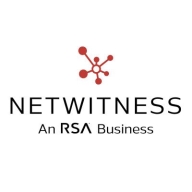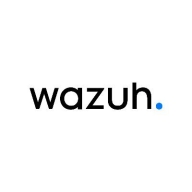

NetWitness NDR and Wazuh compete in the network detection and response domain. NetWitness NDR has the upper hand in advanced threat detection, while Wazuh is more cost-effective due to its open-source foundation.
Features: NetWitness NDR provides real-time threat visibility, centralized threat intelligence, and automated threat analysis. Wazuh stands out with its open-source versatility, extensive integration options, and comprehensive security analytics.
Room for Improvement: NetWitness NDR could simplify its deployment process and enhance user-friendliness. It may also benefit from expanding its integration capabilities. For Wazuh, improving technical support, enhancing documentation, and expanding its advanced threat detection features could be beneficial.
Ease of Deployment and Customer Service: NetWitness NDR is known for seamless integration and thorough documentation but is complex to deploy. Wazuh offers easier deployment owing to its open-source nature and community support but lacks the comprehensive technical support of NetWitness NDR.
Pricing and ROI: NetWitness NDR is more expensive due to its advanced features, offering a significant return on investment through superior threat detection capabilities. Wazuh, with its open-source model, provides a more economical setup, offering satisfactory security at a lower cost, leading to good ROI.
I have seen value in security cost savings with Wazuh, as using proprietary EDR versions could save us substantial money.
They responded quickly, which was crucial as I was on a time constraint.
There is no dedicated technical support for Wazuh as it is open source.
The documentation is good and provides clear instructions, though it's targeted at those with technical backgrounds.
Currently, I don't see any limitations in terms of scalability as Wazuh can still connect many endpoints.
It can accommodate thousands of endpoints on one instance, and multiple instances can run for different clients.
Scalability depends on the configuration and the infrastructure resources like compute and memory we allocate.
The indexer frequently times out, requiring system restarts.
The stability of Wazuh is strong, with no issues stemming from the solution itself.
The stability of Wazuh is largely dependent on maintenance.
I think Wazuh should improve by introducing AI functionalities, as it would be beneficial to see AI incorporated in the threat hunting and detection functionalities.
Wazuh could improve by creating videos on YouTube covering installation, use cases, and integration of third-party APIs for different scenarios that other SAAS services provide.
The integration modules are insufficiently developed, necessitating the creation of custom integration solutions using tools like Logstash and PubSub.
Wazuh is completely free of charge.
Totaling around two lakh Indian rupees per month.
Wazuh is free to use, but there are licensing fees for third parties.
The system allows us to monitor endpoints effectively and collect security data that can be utilized across other platforms such as SOAR.
With this open source tool, organizations can establish their own customized setup.
Wazuh is a SIEM tool that is highly customizable and versatile.
| Product | Market Share (%) |
|---|---|
| Wazuh | 10.7% |
| NetWitness NDR | 1.0% |
| Other | 88.3% |


| Company Size | Count |
|---|---|
| Small Business | 10 |
| Midsize Enterprise | 2 |
| Large Enterprise | 5 |
| Company Size | Count |
|---|---|
| Small Business | 25 |
| Midsize Enterprise | 15 |
| Large Enterprise | 8 |
Using a centralized combination of network and endpoint analysis, behavioral analysis, data science techniques and threat intelligence, NetWitness NDR helps analysts detect and resolve known and unknown attacks while automating and orchestrating the incident response lifecycle. With these capabilities on one platform, security teams can collapse disparate tools and data into a powerful, blazingly fast user interface.
Wazuh offers comprehensive security features like MITRE ATT&CK correlation, log monitoring, and cloud-native infrastructure. It ensures compliance and provides intrusion detection with high scalability and open-source flexibility, ideal for businesses seeking robust SIEM capabilities.
Wazuh stands out in security information and event management by providing efficient log aggregation, vulnerability scanning, and event correlation against MITRE ATT&CK. Its capability to integrate seamlessly with environments, manage compliance, and monitor files makes it suitable for cloud-native infrastructures and financial sectors. Despite its technical support needing enhancement and opportunities for improving AI integration and threat intelligence, its open-source nature and cost-effectiveness make it appealing. Users can leverage custom dashboards powered by Elasticsearch for precise data analysis, even though there is a desire for a more user-friendly interface and better enterprise solution integration. Deployment may be complex, but its features contribute significantly to fortified security postures.
What are the essential features of Wazuh?Industries like finance and cloud infrastructure heavily utilize Wazuh for its security strengths. By monitoring endpoints and ensuring compliance with frameworks, companies can improve security posture and swiftly detect anomalies. The platform's focus on event correlation and alerts for security incidents is particularly beneficial.
We monitor all Extended Detection and Response (XDR) reviews to prevent fraudulent reviews and keep review quality high. We do not post reviews by company employees or direct competitors. We validate each review for authenticity via cross-reference with LinkedIn, and personal follow-up with the reviewer when necessary.